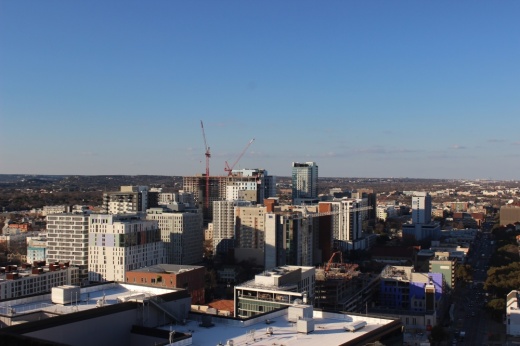According to data compiled by the National Center for Education Statistics, tens of thousands of students were enrolled in higher education institutions within the city as of 2020, and more than 160,000 were enrolled throughout Central Texas. But despite making up a large share of the metro population, Austin does not have an accurate picture of area students' affordable housing needs or the city's student housing stock—something District 5 Council Member Ryan Alter and several of his colleagues are looking to address.
“I think that is something that we just don’t have a good concept of. And I think it’s really important as we talk about affordability—and we’re going to be doing a lot of talking about affordability—that we put students at the forefront here, just because they’re a group that is different in terms of a lot of things,” Alter said Feb. 21.
A resolution from Alter up for consideration Feb. 23 would direct the city to work with local colleges and universities to potentially collaborate on new housing development and set new citywide affordable housing goals for students as part of the city's overall Strategic Housing Blueprint. The measure calls for reporting on the highlighted items before the end of the year.
Potential council action on the topic comes more than a year after Austin's College Student Commission formally urged officials to take a closer look at the housing challenges confronted by many local students. The commission approved a resolution requesting a citywide student housing needs assessment in December 2021, but no official action has yet taken place.
Soon after that measure's unanimous passage, several students involved with the process said they hoped to see more support from the city as they faced inadequate housing options near their campuses or were forced to live far from school to afford to live in the area.
“When you have students who are having to travel, commute and work and do all these things away from campus, they’re not focusing on studying; they’re not focusing on their academic life, life on campus, being involved in organizations," said then-Chair Jeffrey Clemmons, representing Huston-Tillotson University, in late 2021.
Several also said if affordable housing was available, related income limits can still be out of reach for students not earning full-time wages. Much of Austin's affordable housing is capped at 60% to 80% of the regional median family income, $77,300 for an individual as of this year.
“We are urging the city to change that metric because it’s just not adequate,” said Edwin Bautista, a commissioner representing The University of Texas.
Alter said conversations with several college students on the campaign trail last year and the student commission's 2021 action inspired the proposal now on council's agenda. If approved, he said he hopes the city's review can produce a better idea of affordability needs and goals alongside innovation between the city and partner institutions.
“Universities, some have more resources than others, but they’re resources not only just in dollars in endowment, but a lot of colleges and universities have a lot of land,” Alter said. “That land can be a great asset that we can partner with to help them develop it into something that really contributes to the college or university.”
The resolution also asks for a review of the University Neighborhood Overlay, a zoning designation blanketing the West Campus neighborhood that has helped spur denser construction there since the mid-2000s. Alter said that portion of his proposal would evaluate whether similar land use policies could be applied in other places near college campuses.
“I’m really curious to see, has something like that met the need?” Alter said. “What are the lessons we’ve learned? That type of height might not be appropriate for all areas, but ... what type of results did we get there? The affordability level, are those still appropriate in terms of the percentage of the project that’s affordable? So really, how have we performed under this and what can we learn to apply it elsewhere?”





